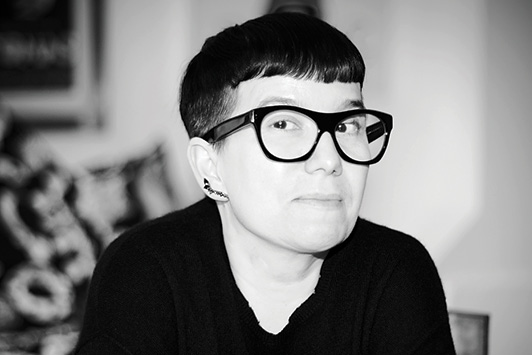
How did you get into the jewelry industry?By pure chance. I was headhunted 18 years ago by a jewelry company in London while I was working for a multi-brand fashion company. At the time, I was not that interested in jewelry. I visited the stores that were supposedly amazing, and I was not that impressed. I could tell there was a potential for me to learn a lot and to develop my skills with window dressing, buying and managing, so I went ahead and started to introduce new designers, change the window displays to make them more interesting, making them more fashion-forward, more creative — our displays were not traditional, or what you expect from a jewelry store. At the time, I brought in designers like Shaun Leane, Naomi Filmer, Tom Binns, Bless, and Betony Vernon, and we also had a workshop with goldsmiths who could create bespoke pieces for customers. We carried “progressive” fine jewelry, silver jewelry, and a certain amount of fashion jewelry.
What do you see as the major jewelry trends for 2018? Customers are currently overwhelmed with the number of brands on the market. They are looking for genuine narratives and beautiful materials. Increasingly concerned with the impact the jewelry industry is making on the environment, customers this year will ask for more ethical processes and materials. They will also be intrigued by the return of old craftsmanship techniques, which are coming back in a modernized way. They will want to see innovation in the form of interesting combinations of materials and techniques.
I must be honest, I always get annoyed with questions about trends. All artistic practices — and of course jewelry, fashion, objects and furniture — develop alongside and are linked to social change. Instead of exploring this fascinating area of cultural expression and creative comment, we call this broad subject “trends.” But this is a generic word that ends up losing its meaning. Customers are less interested now in the weight of a piece of gold or the carat of a diamond. Instead, they prize original design, compelling stones, unconventional settings, a designer’s personal story, a brand’s ethos, and of course, great craftsmanship is still essential to most shoppers. However, I regret that branding sometimes tries to replace a design vision today, with certain brands producing great imagery featuring rather mediocre designs. This great imagery can sometimes suffice to entice a younger customer. But ultimately, branding is just not enough.
What are the most noteworthy challenges for luxury retailers? I think one of the biggest challenges is managing inventory. When there is an excess of inventory, this leads to discounting fine jewelry and creates a snowball effect. It also changes customers’ perception of fine jewelry, because fine jewelry is then treated like ready-to-wear.
The other challenge retailers are facing is boredom. Customers want a true shopping experience, they want a curation with a point of view, they don’t want to see the same products everywhere, they want a selection of brands curated for them, because they are often time-poor. They don’t want to go through too many brands. This is why smaller retailers showcasing fine jewelry are probably doing better when the [inventory] buyer or owner knows their clientele. I think [inventory] buyers in large department stores or large multi-brand retailers often buy without really knowing the clientele or listening to their store manager, and their buying is often disconnected from reality.
Customer service needs to change and improve significantly. I often enter a store, and the staff does not know half the brands they stock, let alone where the keys are for the display cabinet. They cannot speak intelligently about the jewelry they sell or offer good storytelling. Or I enter a store, and the staff is just not bothered — you can be ignored as a customer if you don’t enter the store with a fur coat and a Chanel bag. There is a real issue with customer service today, and this is not talked about enough. Part of the experience in a store is the customer service — sales staff should be knowledgeable, kind, cultured, personable and efficient.
Which up-and-coming designers have impressed you most recently? Foundrae has developed a beautiful, genuine story for its brand. It has expanded carefully, selecting the best stores and not saturating the market. It has developed its brand awareness very cleverly, making the brand highly desirable with genuine ambassadors, with good commercial press and a story to tell on social media.
Kataoka is a Japanese designer with 25 years of expertise. Over the past 40 years, the global jewelry market has been saturated with poorly crafted, homogenized, and overpriced jewelry that produces a staggering amount of toxic industrial waste. Taking its roots in the Japanese heritage of incomparable craftsmanship, Kataoka jewelry was founded as a response.
No harmful chemicals are used in the Kataoka jewelry production process. All jewels are handcrafted with gemstones and diamonds that are handpicked and hand-set, and produced in limited quantities to ensure minimal environmental impact. Even the designer himself and his team travel to work by bikes.
Which new initiative are you working on? We are working on a new website for our latest retail proposition — Objet d’Emotion. Through this platform, we currently offer fine-jewelry personal shopping services: sourcing and commissioning jewels for our clients, combining pieces from different designers in each client’s own unique style. We also hold pop-up events where we offer pieces available to purchase immediately.
Image: Valery DemureArticle from the Rapaport Magazine - March 2018. To subscribe click here.